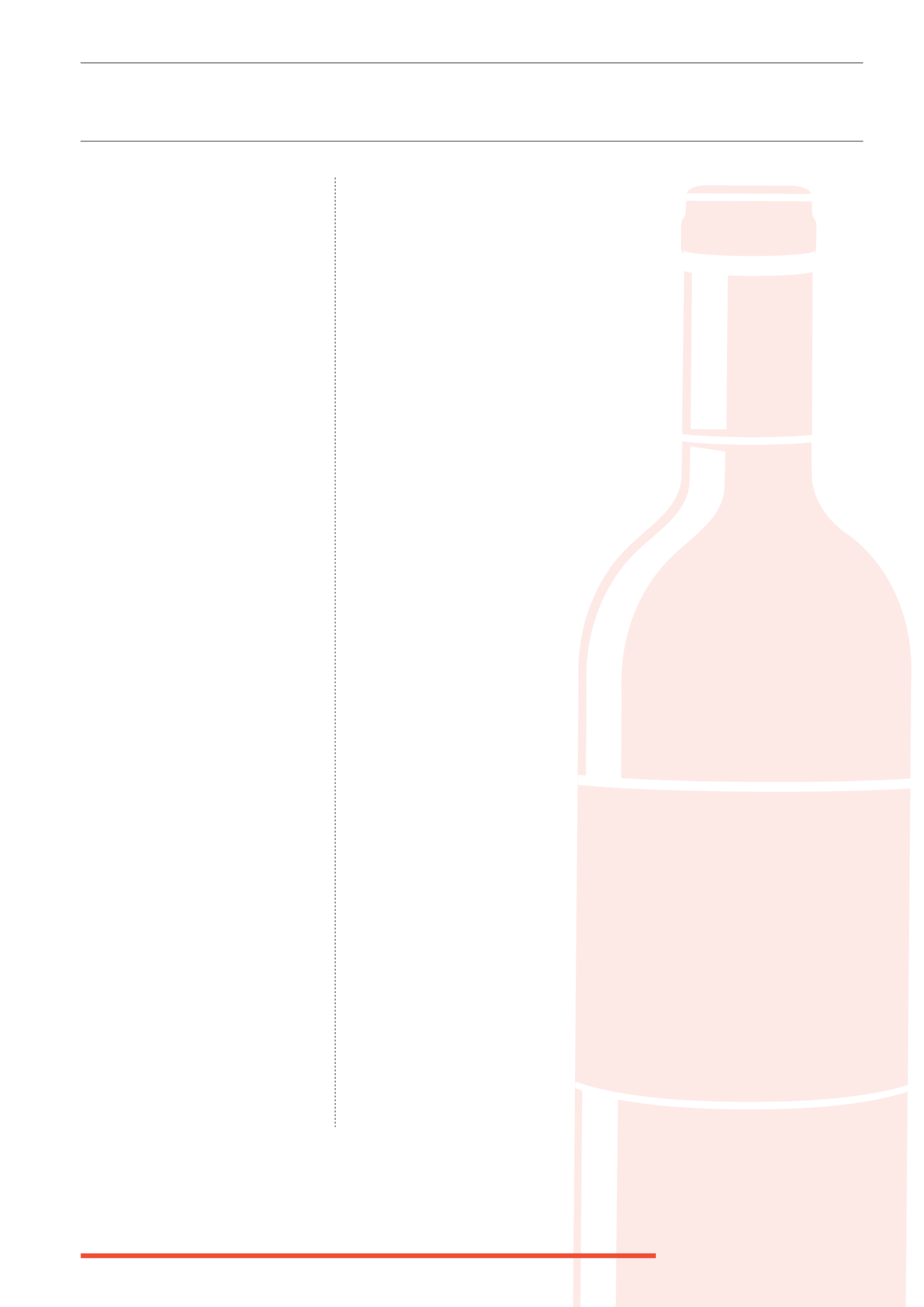
11
obstructive barriers to investment were
removed. A sudden correction occurred
in 2011, related to the introduction of
restrictions on ‘gift-giving’ by Chinese
state officials and corporate executives,
broadening of palates, and loss of
confidence when prices declined.
The subsequent crash most significantly
affected en primeur prices, with prices
of first growths — the main wines of the
five leading Châteaux of Latour, Lafite
Rothschild, Margaux, Haut Brion and
Mouton Rothschild — falling the most.
“A big factor has been what happened
with the ’09, a brilliant vintage, in which
a huge number of wines were given
perfect scores of 100 points,” says Tom
Hudson of Farr Vintners. “In the eyes
of the consumer, the value is in the
cheaper wine with the very high score
rather than the expensive one. This
has had an effect on the marketability
of young first growths at extremely
high price levels”. But like any sector,
the potential for slumps is real and the
sector experienced a similar Bordeaux
slump in the early 1970s, when a weak,
overpriced 1972 vintage followed by the
1973 oil crisis caused market collapse.
20
Nevertheless, most portfolios will
consist of more than Bordeaux - a
typical diversified wine portfolio at
Berry Bros. & Rudd includes some
Burgundy, a little Rhône, Super
Tuscans, New World and Champagne
and these markets have performed
strongly during the Bordeaux crisis.
21
Most portfolios are very individual and
Californian and Australian vintages are
now vying with European wines for a
place amongst the elite wines in high
demand and with appreciating values.
In spite of the Bordeaux issues since
2011, which many commentators
see as an opportunity to acquire
undervalued vintages, the performance
of the sector through the period of
the 2008 world economic crisis has
been encouraging: Knight Frank’s Fine
Wine Icons Index was up 7% on the
year (2014 – 2015), with strong growth
for certain US and Italian vintages
and the signs are that the top end of
the Bordeaux market has bottomed
out in 2015, with commentators
predicting an upturn in performance.
All of this can only be good news
for a market whose overall worth
is around $4 billion a year.
22
“Most portfolios are very individual and Californian and Australian vintages are now vying with
European wines for a place amongst the elite wines in high demand and with appreciating values”


